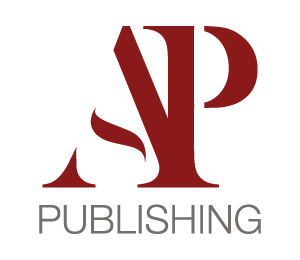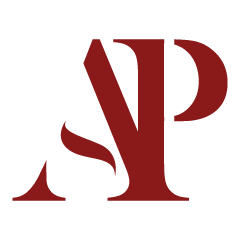L’importanza della revisione dei testi nei processi di traduzione con i CAT Tool
[:it]
Nella gestione delle traduzioni con i CAT Tool, a volte ci si avvale di più di un traduttore per lingua. Oggi è disponibile un traduttore, domani un altro, tutto è sempre urgente…
Il primo errore è recuperare la traduzione di un manuale e mandare in traduzione solo la parte di testo mancante. Il secondo (lato agenzia) avviene quando i testi vengono inviati a un traduttore diverso da quello che ha lavorato sul progetto simile. Il terzo errore sta nell’importare il testo tradotto e non revisionare l’intero manuale.
Partiamo dal principio. Un’azienda, al momento dell’adozione di un sistema di recupero delle traduzioni, fa un data entry dello storico. Recupera le lingue perché non vuole ripagare quello che ha già tradotto. Dicono: “…è sempre andato bene”, “…nessuno si è mai lamentato delle traduzioni”. Occorre fare un’analisi seria e definire bene cosa è recuperabile. C’è il rischio di una mancanza di uniformità terminologica all’interno dei testi recuperati.
Dobbiamo inserire nella TM (translation memory) solo i contenuti coerenti con la terminologia. Una volta che il testo è stato revisionato in linea con la terminologia adottata, possiamo inserirlo nella memoria di traduzione. Abbiamo creato un database terminologico e una memoria di traduzione. Questi sono gli strumenti principali dell’azienda, per potersi avvalere di vari traduttori senza compromettere il risultato atteso.
Rimane comunque necessario inviare tutto il manuale al traduttore anche con le parti già recuperate. Un traduttore ha la possibilità di correggere una svista, aggiornare un termine, eseguendo una manutenzione della memoria di traduzione.
La memoria di traduzione deve essere messa a disposizione dei redattori. Prima di scrivere una frase dobbiamo cercarla nel database e, in caso, modificarla per crearne una nuova. La ricerca avviene con le parole chiave. Ma se non abbiamo una terminologia come facciamo a cercare una frase? Come facciamo a dire all’utente “cerca nel manuale” (funzione CTRL+F su html o pdf) se il componente è stato chiamato in modo diverso all’interno del manuale o della documentazione tecnica in generale?
Applicare la giusta terminologia, darà potenza al brand, coerenza nei contenuti, validità alle avvertenze di sicurezza e faciliterà l’utente nell’individuare la denominazione di un componente, dallo schema elettrico al catalogo delle parti di ricambio, agli allegati tecnici. Impariamo dal web: in ottica SEO, la denominazione è importantissima per farsi trovare e poi vendere.
L’inserimento di un software CAT ha un costo contenuto rispetto a un normale iter produttivo, e si ripaga in poche settimane (a seconda del volume di testi da tradurre e in quante lingue) ma serve a dare certezza e coerenza ai contenuti di domani.[:en]
For what concerns the translations management, especially if you have a Cat tool, sometimes it is necessary to hire more than one translator. One is available today, tomorrow another one, everything is always urgent…
The first mistake is to recycle the translation of a manual and send in translation only the untranslated part. The second mistake (done by the translation agency) occurs when the documents are sent to a different translator than the one who worked on a similar project. The third error is to import the translated texts without checking the whole manual.
Let’s start from the beginning. When a company acquires a translation recycling system, it builds an historical data. The company recycles the texts in all the languages because it doesn’t want to pay again for what it has been already translated. We often hear: “…it was everything all right”, “…Nobody ever complained about the translations”. It is necessary to make a fundamental analysis and define what can be recycled. There can be the risk of non-uniformity in the terminology within the recycled texts.
We must insert in the TM (Translation Memory) only what is coherent with the terminology. Once the text has been checked in line with the selected terminology, it is possible to insert it in the translation memory. Like this, we create a terminological database and a translation memory. These are the main tools of a company who wants to hire different translators without compromising the expected result.
It is anyhow necessary to send to the translator the whole manual, with the parts already translated. The translator can correct an oversight, update a term, maintaining like this the translation memory.
The author must always refer to the translation memory. Before writing a sentence, we must search it in the database and, in case, modify it to create a new one. The research is usually done thanks to the key words but how can we look for a specific sentence if there is not a specific terminology? How can we tell the user “search within the manual” (CTRL+F on html or pdf) if a component has been called in many ways within the manual itself or within the technical documentation in general?
Using a correct terminology will give power to the brand, coherence to the texts, efficiency to the safety warnings and will help the user identifying the denomination of a component; from the electrical diagram to the spare parts catalogue, to the technical attachments. Let’s learn from the web: in the SEO perspective, the denomination is very important if one wants to be found and then sell.
Acquiring a CAT software has a reduced cost compared to a normal translation procedure, and it will be compensated in a few weeks (depending on the quantity of texts to translate and in how many languages) but is very useful to give certitude and coherence to the texts of today and tomorrow.[:]

